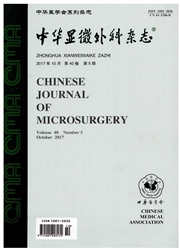

 中文摘要:
中文摘要:
目的观察用DispaseⅡ与胰酶-EDTA冷热交替消化获取的兔角膜缘干细胞体外培养的优化方法。方法获取兔角膜缘组织,分为优化组和常规组。优化组用DispaseⅡ中4℃与胰酶-EDTA中37℃冷热交替消化,常规组用DispaseⅡ中37℃制成单细胞悬液,两组均用含10%血清的培养基进行培养。观察细胞的形态及生长情况,结晶紫染色检测其增殖能力,免疫细胞化学染色方法对细胞进行鉴定。结果与常规组相比,优化组兔角膜缘干细胞表现出相似的生长特性,有较高的增殖能力,细胞免疫化学染色优化组较常规组ΔNp63阳性细胞明显多,而角蛋白K3(AE5)阳性细胞较少。结论用DispaseⅡ与胰酶-EDTA冷热交替消化法获取的角膜缘干细胞可以在体外成功培养,为临床研究奠定更好的实验基础。
 英文摘要:
英文摘要:
Objective To investigate the optimized method of limbal stem ceils (LSCs) in primary culture which obtained by Dispase II and trypsin-EDTA of cold and hot alternating digestion. Methods Obtained the limbal epithelium from rabbits, divided into optimized group and conventional group. The optimized group digested it into signal cell suspension with Dispase II and trypsin-EDTA in 4 ℃ and 37 ℃ respectively and the conventional group digested it only with Dispase II in 37 ℃, then both of them were seeded in 10% serum medium. We analyzed the growth status of cultivated LSCs, crystal violet staining was used to detected their proliferative capacity and immunocytochemistry was used to identify the LSCs. Results Compared with the conventional group, the LSCs of the optimized group exhibited similar growth characteristics, a higher proliferative capacity and it had more ANp63 ceils and less K3 (AE5) cells of the immunocytochemistry. Conclusion The LSCs isolated with Dispase Ⅱ and trypsin-EDTA (cold and hot alternating digestion) could be successfully cultured in vitro, laid a better foundation for clinical research experiments.
 同期刊论文项目
同期刊论文项目
 同项目期刊论文
同项目期刊论文
 期刊信息
期刊信息
